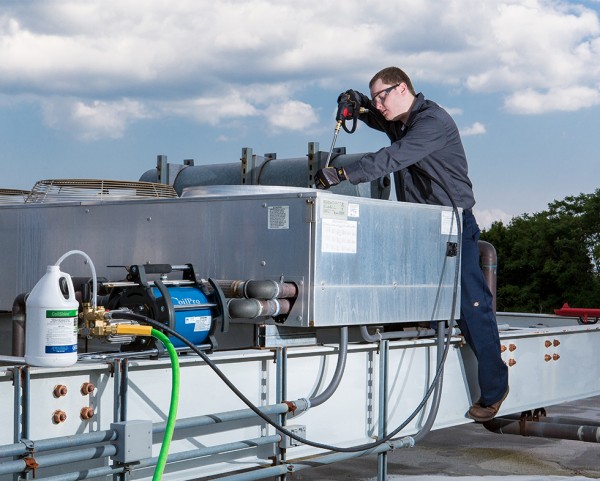 HVAC systems are crucial for maintaining the right temperature and humidity levels in plants and facilities. However, they can become problematic if not properly maintained. Goodway Technologies is sharing best practices for implementing proactive maintenance, which is essential for ensuring the effectiveness and efficiency of HVAC systems. Despite time and cost constraints, facility managers can use various tools and products to make routine maintenance quick and easy.
HVAC systems are crucial for maintaining the right temperature and humidity levels in plants and facilities. However, they can become problematic if not properly maintained. Goodway Technologies is sharing best practices for implementing proactive maintenance, which is essential for ensuring the effectiveness and efficiency of HVAC systems. Despite time and cost constraints, facility managers can use various tools and products to make routine maintenance quick and easy.
Here are five tips to help optimize a facility’s HVAC maintenance plan.
- Use the right tools for each maintenance task. Using improper tools can cause more harm than good. For example, using a pressure washer to clean coils can damage delicate fins, leading to costly repairs. Instead, invest in a coil cleaning machine designed specifically for this purpose. Some tools even incorporate clean-in-place maintenance to minimize downtime. By using the right products, it can save time, money, and prevent damage.
- Provide proper training for employees operating maintenance equipment. Include training on how to conduct HVAC maintenance and cleaning in the onboarding process for new employees. Correct usage of maintenance equipment not only saves time but also reduces the risk of accidents caused by operator error. When purchasing new equipment, consider requesting on-site training from vendors.
- Develop a maintenance plan for each HVAC system. Investing in regular HVAC maintenance can prevent costly repairs and extend the lifespan of equipment. Create a maintenance plan that includes scheduled maintenance at least once or twice a year, depending on usage. Sticking to this plan helps prevent unexpected breakdowns, outages, and repairs. Regular cleaning and maintenance also improve energy efficiency, making it a preventative measure.
- Keep an operating log. Operating logs are invaluable tools for plant maintenance. They help track the system’s operation by monitoring temperature, pressure, and fluid levels. These logs are especially useful for chillers. By regularly reviewing the log, facility managers can anticipate when maintenance or repairs may be necessary based on abnormal readings. Additionally, operating logs facilitate trend analysis, performance measurement, and year-over-year comparisons.
- Measure efficiency improvements. Measurement is often overlooked or skipped due to the time and complexity involved. However, it is important to measure the energy efficiency gains resulting from regular chiller cleaning. HVAC systems contribute significantly to operational expenses in plants. Measuring the cost savings and energy efficiency improvements achieved through maintenance work provides meaningful data for upper management.
By ensuring the facility management team is equipped with the right tools, adequately trained, maintains an operating log, and adheres to scheduled maintenance, the HVAC systems will yield positive results. For more tips, tools, and best practices in facility and plant maintenance, visit www.goodway.com.



